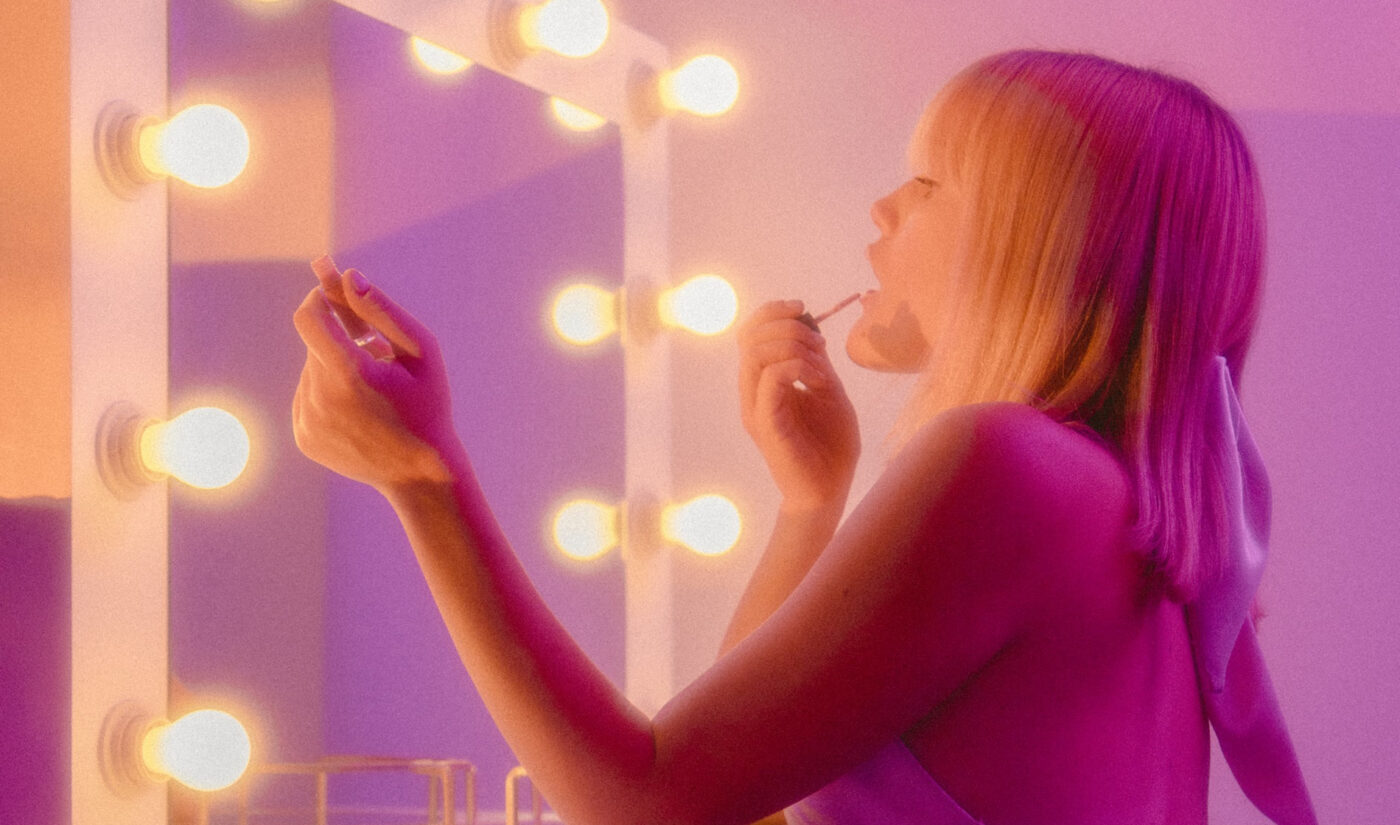Think of a classic department store beauty counter. Even if you’ve never partaken, you’ve probably seen enough to picture their lineups of glossy products and their knowledgeable staffers. This mainstay of brick-and-mortar shopping is designed to showcase cosmetics brands’ products in real-time action, with the deft touch of a trustworthy expert.
Live shopping streams, BEN believes, are the beauty counters of the future.
BEN is an artificial intelligence entertainment company whose bread and butter is using AI to link brands with creators for what it calls “non-disruptive integrations” across a variety of content, from digital video-on-demand and livestreams to TV shows, movies, podcasts, music, and more. When it comes to digital content, BEN’s integrations pair companies with creators whose content niche fits with their products–and therefore likely have an audience interested in buying.

Subscribe for daily Tubefilter Top Stories
For those partnerships, BEN focuses on having brands’ products appear throughout creators’ content, rather than in one isolated spot. Justin Smith, BEN’s senior director of influencer integrations, tells Tubefilter that data shows some viewers skip ahead through videos if creators pause the content for “Here’s a word from our sponsor…” moments. And, on top of manual skipping, there are more and more ad blockers, like SponsorBlock, which are specifically made to automatically speed by parts of videos where creators talk about brands.
So, how can brands expand their methods of reaching consumers who are interested in hearing about their products?
One way is by partnering with creators who do shoppable livestreams.
Live ecommerce is a multibillion-dollar business in China, but its growth has been slower in the States
Livestreamed ecommerce isn’t a new invention–it’s already a massive multibillion-dollar industry in China.
A recent report from McKinsey found that Hangzhou-headquartered retail giant Alibaba generated a whopping $7.5 billion in “total transaction value” during just the first half-hour of a holiday shopping stream it held on Taobao Live in November 2020. McKinsey’s report goes on to estimate that shoppable livestreams will drive 10-20% of all ecommerce revenue by 2026.
During a recent digital summit held by The Drum, BEN’s VP of strategic partnerships, Angelita Sierra, explained that livestreamed ecommerce has been taking root in the United States since 2016, and when COVID hit, it “only continued to skyrocket that trend.”
Over the past year, YouTube, Facebook, Instagram, and TikTok have all introduced features or events that put creators in the spotlight as hosts of multi-hour shopping streams. At the same time, Amazon has been tapping streamers from these platforms to join its Influencer Program and go live with the sole purpose of advertising products from its vast catalog.
“There’s a ton of opportunities,” Sierra said. “The livestreaming element to the new features that platforms have are extremely exciting, allowing you to pin product catalogs, allowing you to really have that one-to-one direct conversation with your consumers.”
Like staffers at beauty counters, she said, “Influencers are trusted sources…There’s a trust and credibility there.”
So far, BEN has arranged live shopping partnerships with brands like Unilever and with nonprofits like Cure Rare Disease, for which it raised nearly $150,000 during a charity stream on Twitch, Sierra said.
Some creators are hesitant to get into live shopping. Here’s why.
Despite opportunities, new platform features, and burgeoning viewer interest in live ecommerce, creators have been hesitant to shift from sponsor spots in VODs to full-fledged shopping streams.
Why? A big part of the reticence, Smith tells Tubefilter, is that creators are used to arranging brand deals with preset payments, where they will make an agreed-upon amount regardless of how much viewership or how many conversions their content generates. Most live shopping partnerships, on the other hand, only pay out through affiliate links–meaning creators make a percentage of each sale they drive.
“Many small brands have a hard time contracting affiliate-only deals, as most creators prefer the guarantee of payment if they are going to represent a brand or product,” Smith says.
He adds that there are also “a lot of creators afraid to sell live as they are afraid to come off inauthentic or ‘salesy.'”
In his opinion, those creators are missing out.
Creators who already go live on platforms like Twitch and YouTube are prime candidates for hosting shoppable streams
“Twitch and YouTube and Instagram are so overpopulated with influencers that there has to be a way for people with a small following to make money,” he says. “Many creators have not made the connection between posting about products they love and benefit from every day with the use of affiliate links to sell those products. Once they mix live selling with brand sponsorships and affiliate sales, they can turn their communities into a sustainable income.”
Creators who should be eyeing live shopping are folks with “high, interesting” personalities who are “very, very active with their chats,” Smith says. Twitch streamers, for example, are prime candidates.
“This is why Twitch is very good when it comes to selling products as compared to someone that doesn’t usually livestream on Instagram or YouTube,” Smith says. “It doesn’t quite fit if this person’s never gone live on their social platforms.”
“If I’m used to engaging with my chat, and someone says, ‘Hey, do they have that in black, or is it in orange?’ I can say, ‘Actually, yes, they have it in these colors and you can click the link and see all the colors there.’ That interaction is really important,” Smith explains. “And it’s very, very fast-paced, so it takes someone who is not only accustomed to talking about clothing, that has become somewhat of an expert in that space and to their audience, but are also engaging enough.”
Smith foresees that in the next three to five years, live shopping could become as big in the U.S. as it is in China–and the creators who ride that wave will be early adopters with livestreaming experience.
For now, Smith says, “Everybody sees that live ecommerce is the future, but it hasn’t really hit that tipping point where everybody is saying, ‘Wow, this is a really good way to connect with my audience and make an income from my personal recommendations.’”
Not yet, at least.








